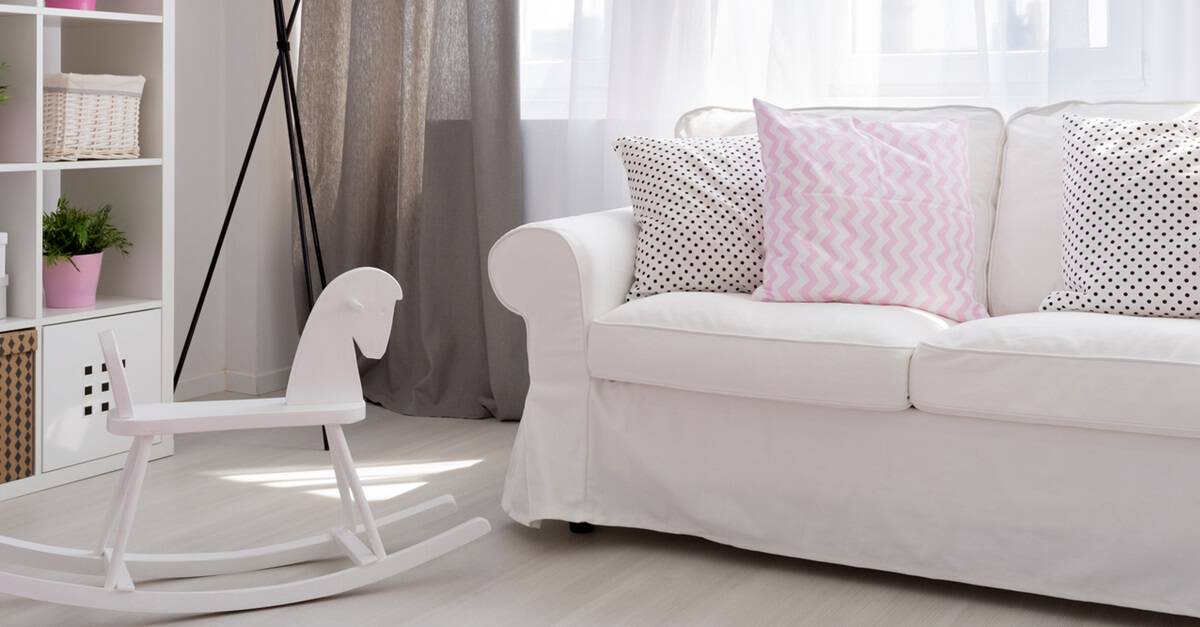Haitian cotton describes an upholstery fabric displaying the “natural look” of cotton. It consists of a weave of thick, irregular yarns with lots of impurities (twigs, leaves, and seed fragments). Haitian cotton produces an off-white, casual look that blends with many color schemes and even serves as the central decorating theme.
That’s the good news.
The bad news is that any off-white upholstery receiving normal use from an average family (heaven forbid the family should have a dog) gets quite soiled – and in short order.
“But that’s not the problem,” you say. “I’ll just clean it myself with a sponge and a detergent safe for delicate fabrics.”
If Only It Were That Simple
Here’s the problem: The impurities I mentioned, which give Haitian cotton its natural look, contain vegetable dye. When exposed to moisture and detergents, almost immediately this dye begins to bleed. Upon drying, reddish or brownish circles appear all over the fabric – truly a Haitian cotton catastrophe.
So, the solution to the problem is to call your friendly, professional cleaner, right? I only wish that were the answer. Many professionals have struggled with Haitian cottons, achieving little better results than the homeowner. In fact, this decade will probably go down in the annals of upholstery-cleaning history as the decade of the Haitian cotton catastrophe.
Now, the question is, what can you do to maintain your Haitian cotton, and is there hope for cleaning it?
First, you can greatly postpone the need for cleaning by regular and thorough vacuuming. Second, true professionals have received training in cleaning sensitive fabrics, such as Haitian cottons. They’re the ones with years of experience, formal training, and, above all, the ability to explain cleaning procedures with ease. So, ask.
Your final hope involves manufacturers who are aware of the Haitian cotton catastrophe and are developing synthetic substitutes. The mere suggestion that a synthetic substitute be used “because of my five children and two dogs” may elicit a gasp from a decorator who is a devout naturalist. Remember, though, ultimately it’s a decision that you alone must live with.

